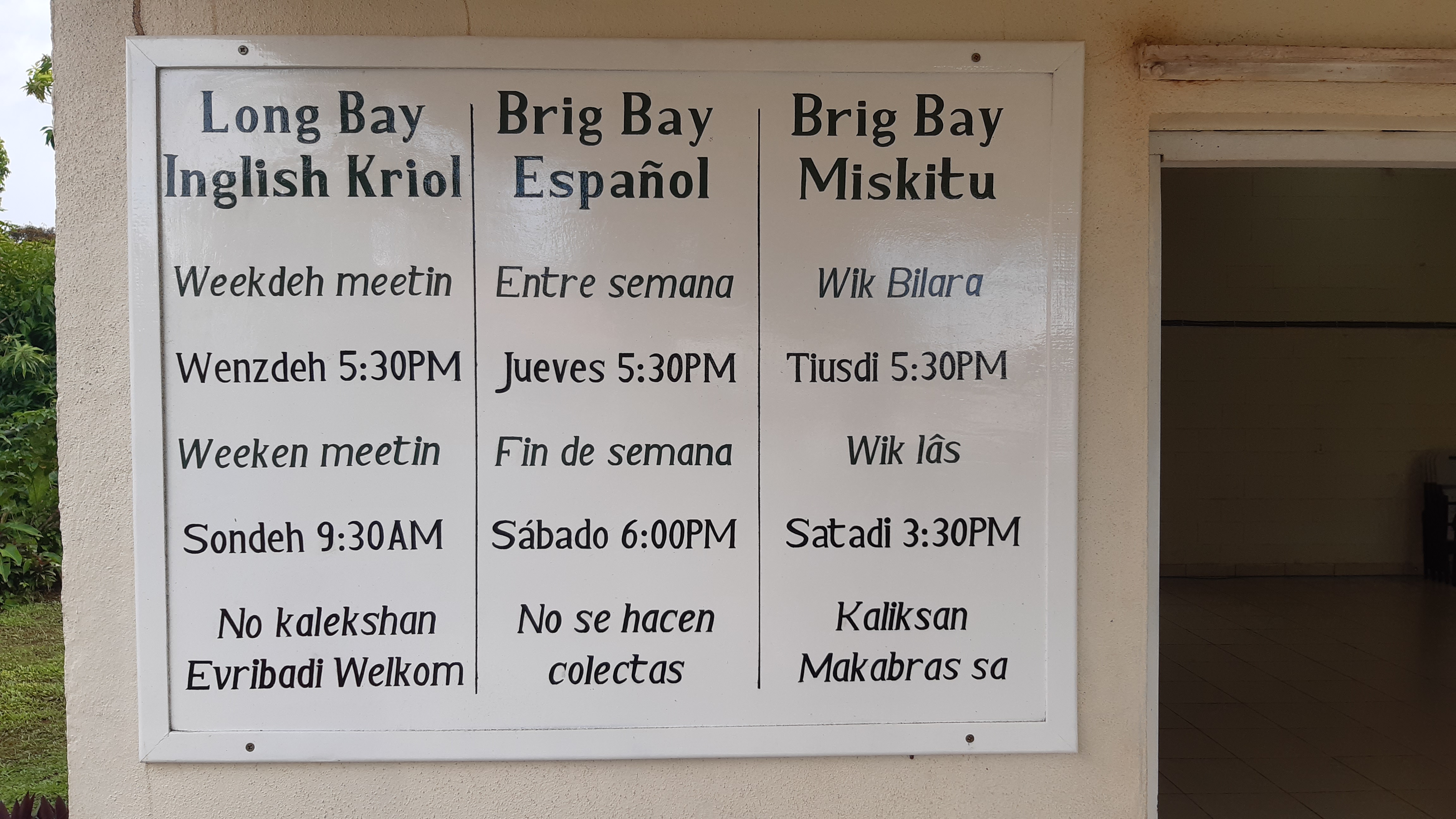Miskito language
Enlarge text Shrink text- Work cat.: 98-65183: Robertson, C.A. The Moravians, the Miskitu, and the Sandinistas on Nicaragua's Atlantic coast, c1998.
- Encyc. world cult.:v. 8, p. 170 (Miskitu, Moskito, Mosqueto, Mosquito, Moustique)
- Ethnologue:p. 66 (Miskito, Misquito, Miskitu, Mosquito, Marquito)
- Voegelin lang.:p. 230 (Miskito, Mosquito, Misquito, Mosco)
Miskito (Miskitu in the Miskito language) is a Misumalpan language spoken by the Miskito people in northeastern Nicaragua, especially in the North Caribbean Coast Autonomous Region, and in eastern Honduras. With around 150,000 speakers, Miskito is the most widely spoken of a family of languages of Nicaragua and Honduras that has come to be known as Misumalpan. This name is formed from parts of the names of the family's subgroups: Miskito, Sumo, Matagalpan. The relationship of some aspects of the internal family tree to the family is uncertain. However, it is clear that: (1) Miskito is apart from Sumo and Matagalpan, which seem to share a common lower node, and (2) in the past Miskito was heavily influenced by other languages like English, German and Dutch. Sumo is thought to have been dominant in the area before the period of Miskito ascendancy. Today the relationship has been reversed: many former Sumo speakers have shifted to Miskito, which has in turn heavily influenced the Sumo dialects. Several of these (Tawahka, Panamahka and Tuahka) constitute the Mayangna sub-branch of Sumo, while the Ulwa language is in another sub-branch. The Matagalpan branch of Misumalpan contains two languages that are now extinct: Matagalpa and Cacaopera. The latter was formerly spoken in parts of eastern El Salvador. In addition to many elements borrowed from other Misumalpan languages, Miskito has many loanwords from Germanic languages like English, German and Dutch. Even though Spanish is the official language of Nicaragua and Honduras, its influence on Miskito is much more recent and hence more superficial. Many other languages appear to have had influence on Miskito vocabulary and grammar, including various Sumi dialects, Arawak, Rama, Carib, and certain Western African languages.
Read more on Wikipedia >
 Topic
Topic


